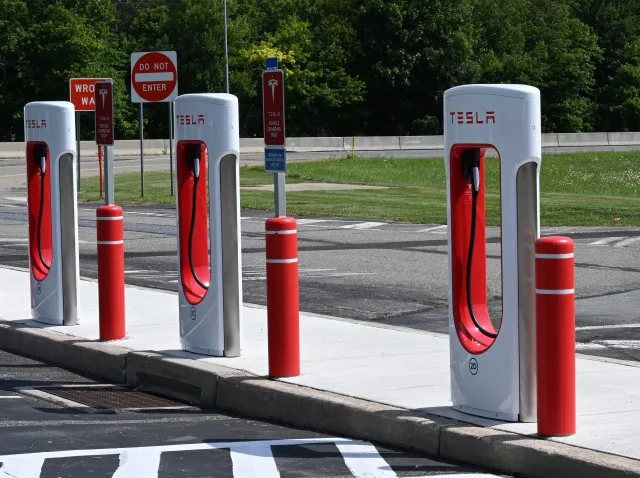Tesla’s Harris Ranch Supercharger in Central California, known as the largest EV charging station in the world with 98 stalls, has drawn attention for a surprising reason—a diesel generator. This generator, often supplementing the Supercharger’s power, has raised eyebrows and sparked a debate over whether it’s a “dirty secret” for Tesla.

Tesla, much like other industries, relies on the power grid to supply energy to its Supercharger stations. The U.S. electrical grid is powered by a variety of sources—oil and gas (39.8%), coal (19.5%), nuclear (18.2%), wind (10.2%), and others. It’s no secret that energy doesn’t come from just one clean source, and Harris Ranch is no different, tapping into the grid’s energy mix to power the chargers.
The controversy stems from reports that the Superchargers at Harris Ranch are occasionally supplemented by a diesel generator to meet high demand or as a backup during power outages. The generator isn’t used constantly, but during peak times, it ensures there’s enough power to keep the station running smoothly. The details on how often the generator kicks in are unclear, with even apps tracking energy sources unable to pinpoint the exact contribution of the diesel generator.
This isn’t exclusive to Tesla. Many businesses, especially those in critical infrastructure, use diesel generators to ensure continuous operations, especially when demand spikes or the grid is unable to keep up. Tesla’s use of a diesel generator during peak hours is simply part of the broader practice of maintaining business continuity. In fact, standby power is essential in many industries, including hospitals and data centers, where outages are unacceptable.
While the use of diesel power isn’t the cleanest option, it doesn’t fully negate the environmental benefits of electric vehicles. In fact, when considering the full lifecycle, EVs generally have a lower environmental impact than gas-powered vehicles. The exact environmental impact depends on the power mix used for charging, but it’s important to note that even with occasional diesel use, EVs are still a more sustainable option.
This issue highlights the challenges Tesla faces as it continues to scale its EV infrastructure. As more people turn to electric vehicles, the demand for reliable and uninterrupted charging grows. Diesel generators are commonly used in these situations to supplement the grid, ensuring that stations like Harris Ranch can keep up with the growing demand.
Summary:
- What is the Harris Ranch Supercharger? Tesla’s largest charging station located along Interstate 5 in Coalinga, CA, with 98 charging stalls.
- What sparked controversy? The use of a diesel generator to supplement the power of the Supercharger has raised concerns and is referred to as Tesla’s “dirty secret.”
- Does it actually use a diesel generator? Yes, while it primarily draws power from the grid, the Harris Ranch Supercharger uses a diesel generator during high demand or power outages.
- Where does the Supercharger get its power from? It draws power from the grid, which consists of a mix of energy sources including natural gas, coal, nuclear, wind, and solar.
- Why would a diesel generator be used? Diesel generators are often used for backup power during outages or to supplement energy during peak demand times.
- Is this unique to Tesla? No, many businesses and critical infrastructure use diesel generators for backup power.
- Does this negate the environmental benefits of electric vehicles? Not necessarily. While diesel generators aren’t the cleanest, EVs still offer environmental benefits over gas-powered vehicles, especially over their full lifecycle.
- What does this reveal about EV charging infrastructure? It highlights the challenges of scaling up EV charging infrastructure and ensuring a reliable power supply, especially in remote locations or during peak usage times.